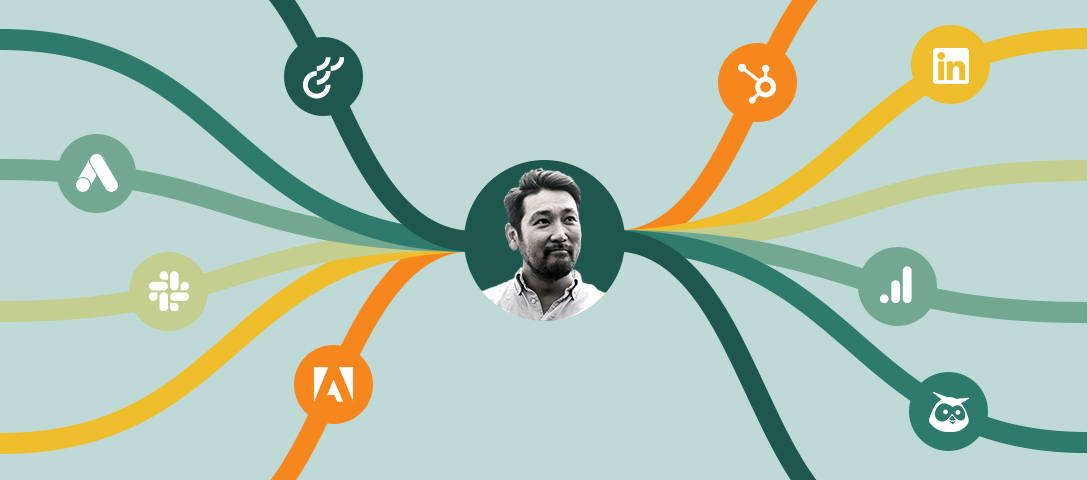
Lead Gen Strategies: How to Use Content to Fuel a Sales Pipeline
How to use content to build a lead generation strategy that’ll keep your sales team happy
Successful inbound marketing relies on supplying leads with the right information at the right time. The internet has made buyers much more self-reliant when making purchasing decisions, so it is essential that your business produces top quality content that is relevant to their business pains and helps establish you as a credible source of information, as well as a purveyor of solutions that meet their needs.
Let’s take a look at the three main stages of the inbound marketing sales pipeline as part of your lead generation strategy, to help us better understand what customers are trying to achieve at each step. Armed with this knowledge, you can then create finely targeted content that speaks directly into the prospect’s situation, preparing them to pull them into the next stage of the pipeline.
Awareness content
Long before a lead becomes an official prospect, people are visiting your website looking for general information to answer high level questions they may have. Yet even at this stage, your business has a chance of capturing the attention of the most casual of browsers, simply by letting them you know the problems they face.
For the greatest degree of success, you must:
- Identify the business pains your prospects may face.
- Identify the probable people who will be looking for solutions to those problems (CEO/CFO/CIO or even non-board level readers).
- Create easily-digestible information that imparts that information quickly and easily.
Because prospects are only really searching for information at a high level, content will need to be succinct. Consider using:
- Blog posts
- Online presentations
- Infographics
- Short introductory emails
“43% of all marketers generated at least 1 customer from a blog.”
Ultimately your content needs to:
- Confirm that the prospect has a genuine business pain.
- Provide evidence in support of that pain, and propose generalised solutions.
- Provide additional third party facts and statistics that back up the proposed solutions, lending additional expert credence to your content.
You must avoid pressure-selling – the content is to serve no other purpose than to inform and to raise your company profile. Your prospect will add this information to their mental inventory and almost certainly use it to begin the internal buying process. You can also use marketing automation tools to “suggest” related consideration content to help move them into the next stage of the sales pipeline.
“Lead nurturing programs show an average 20% increase in sales opportunities from nurtured leads and provide dramatic improvements to key conversion stages in the sales process.” – Calculating the Real ROI from Lead Nurturing, DemandGen Report.
Consideration content
After the prospect has become more aware of their situation and the high level solutions, they will need to present a business case to make a purchase. This is the point at which research begins in earnest.
As before, the key to success is making sure content is relevant, timely and factual. Because the consideration stage of the buying process may involve different job roles, you will also need to carefully reconsider your target personas, creating new ones where appropriate and addressing their business pains. For further clues as to how your content needs to map to client needs and buying processes, your marketing and sales teams can review previous projects.
Consideration content is also intended to provide in-depth information that will provide your prospect with everything required to create a shortlist of suitable solutions and providers. Decision makers need extensive facts, figures and examples targeted to their specific interests if they are to be convinced of your expertise and knowledge.
Typically consideration content takes the form of:
- White papers
- Extended articles
- Reports
Consideration content needs to be impartial, providing expert, non-partisan advice. Just like awareness content, consideration documents are supposed to inform, rather than explicitly sell. When prospects access your consideration content, they are giving clear indications of intent. Your marketing automation solution needs to provide other persona-focused consideration content, or provide links to decision content to help keep the prospect moving along the sales pipeline and maintaining a chain of communication with them throughout.
“66% of buyers indicate that ‘consistent and relevant communication provided by both sales and marketing organizations’ is a key influence in choosing a solution provider” – Genius.com survey.
Decision content
With shortlisting complete, your prospects need to make a final decision. As part of your lead generation strategy, decision content is again targeted at decision-makers and is much more of a sales document than those that precede it. Your prospect will not have stumbled on this content by accident – your marketing automation platform and pipeline rules will have guided them to the document based on their previous downloads and the inferences you can draw from that.
You now have an audit trail of content they have accessed, giving insight into their business pains and their specific persona, allowing you to pull them towards the final information they really need to make a purchase.
“Automating Lead Management sees a 10% or more increase in revenue in 6 months.”
Content still needs to be factual and informative, providing the last pieces of the purchasing jigsaw. Unlike awareness and consideration documents, decision content should openly discuss your products, building upon the previously discussed issues and demonstrating why yours is the solution the prospective buyer is looking for.
Getting the sales pipeline mapped
The keys to successful content delivery as part of a lead generation strategy are:
- Accurate persona creation – who are you targeting?
- Accurate business pain identification – what are the problems these people face?
- Appropriate solution recommendations – how you can help these people?
- Timely information presented in the right way to the right people according to each of these factors.
- The use of automation to help keep prospects moving along the sales pipeline from awareness to purchase.
Discover how to pinpoint customers on their buying journey for better targeting. Get your free eGuide now: Make an impact: key stages in the customer lifecycle
Read the latest positioning trends and insights.
Tap into our brand and product positioning, storytelling, and creative expertise to inspire your next strategic move.

